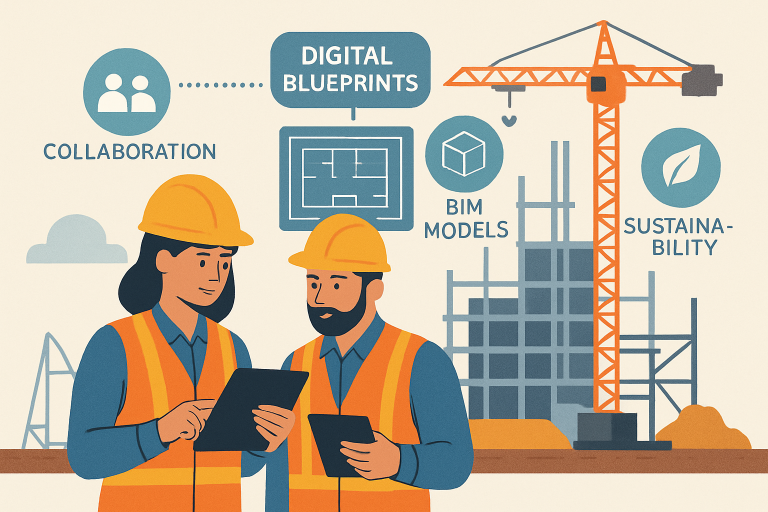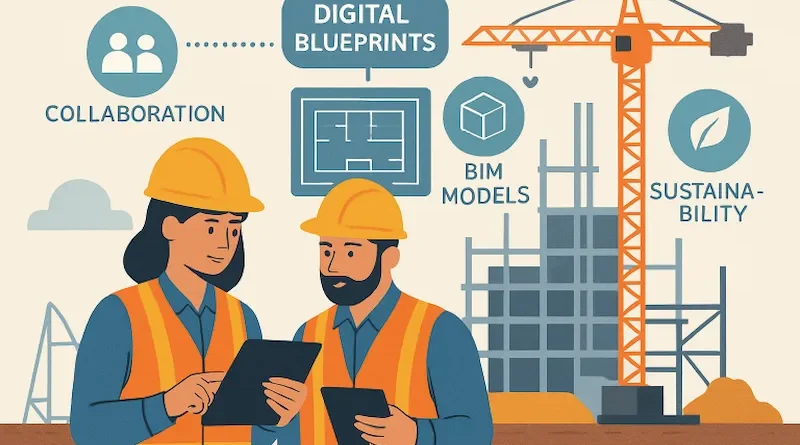Modern Project Management Techniques for Large-Scale Construction
Large-scale construction projects today demand more than just technical expertise—they require advanced project management strategies that enhance collaboration, transparency, and sustainability across every phase of the development. As the construction sector faces growing complexity fueled by urbanization, tighter regulations, and higher stakeholder expectations, forward-thinking professionals are combining time-tested best practices with cutting-edge digital innovation.
This holistic blend of tradition and technology is driving greater efficiency, reducing risk, and enhancing stakeholder engagement from pre-construction planning through to project handover. In fast-growing metropolitan areas such as Northern California, making the right choice when selecting commercial general contractors Sacramento, CA, can play a decisive role in the overall success and long-term impact of major developments.
Modern construction management has evolved to harness advanced project management methodologies that transform challenges into opportunities for growth and development. Techniques such as Building Information Modeling (BIM), Integrated Project Delivery (IPD), and agile methodologies redefine team coordination and communication, minimizing errors and enhancing project efficiency. Research indicates that embracing digital transformation and promoting early collaboration can significantly mitigate risks and improve outcomes. As construction leaders adapt to these innovations, they secure their position in a competitive landscape, ensuring quality and lasting performance of their structures.

Building Information Modeling (BIM)
BIM delivers a comprehensive digital “single source of truth” by integrating architectural, structural, mechanical, and systems information into a unified 3D model. Unlike traditional two-dimensional drawings, the BIM model is interactive and updates in real-time as stakeholders contribute or validate data, offering unparalleled clarity and real-time insight. With BIM, potential clashes between disciplines—such as an HVAC duct intersecting with a beam—are identified virtually, allowing for preemptive design adjustments that save valuable time and resources during construction.
This technology substantially reduces change orders, project delays, and costly on-site mistakes, especially on complex and large-scale jobs. The collaborative nature of BIM ensures that key team members, from architects to site foremen, are always working from the latest version of the design. According to research by Allied Market Research, the global market value of BIM is expected to reach $34.2 billion by 2032, reflecting widespread industry recognition of its numerous advantages. As projects become larger and more complex, the importance of seamless teamwork and error minimization, provided by BIM, continues to grow.
Integrated Project Delivery (IPD)
IPD is increasingly popular because of its innovative approach to contracts, which promotes collaborative risk and reward sharing among owners, architects, engineers, contractors, and key trades. Instead of isolating responsibilities, IPD involves all main stakeholders early in the project. This builds trust, aligns goals, and encourages open communication from start to finish. The outcome is better planning, joint problem-solving, and a team effort that consistently results in better project outcomes.
Many studies show that IPD can lower costly rework, speed up project timelines, and increase financial returns. By breaking down the traditional barriers between design and construction phases, IPD allows for early identification and quick resolution of key issues, which might otherwise cause cost overruns or delays. The collaborative basis of IPD is especially effective for complex projects where innovation, speed, and risk management are crucial for success.
Agile Construction Methodologies
Inspired by the flexible, iterative processes originally created for the software industry, agile methodologies are now changing how construction teams handle unpredictable or large-scale work. Instead of strict, linear planning, agile methods focus on delivering work in short cycles or “sprints,” with ongoing stakeholder feedback and adjustments as conditions evolve. This adaptability is a major advantage on fast-paced or renovation projects where new discoveries often necessitate plan changes.
Teams may meet daily or weekly to reevaluate priorities, allocate resources, and address on-site realities—whether managing delayed material shipments or facing unexpected site obstacles. A notable example in Chicago showed how a hybrid agile approach helped a historic renovation finish much faster than traditional methods would have allowed. By empowering teams to innovate and resolve issues quickly, agile construction methods continue to grow in popularity as projects become more complex and schedule-focused.
Blockchain for Fund Management
Among the most exciting digital tools now adopted in construction is blockchain, a decentralized ledger that records every transaction and change transparently and securely. Blockchain-based fund management utilizes “smart contracts” to automate payments only when predetermined milestones are completed and validated, ensuring accountability and punctuality in project financing.
This system significantly reduces payment disputes, fraud risk, and administrative overhead, thereby improving the predictability of cash flow for subcontractors and suppliers. Real-world applications—such as those implemented in China’s Xiong’an New Area—demonstrate how blockchain can safeguard project integrity, accelerate approvals, and boost investor confidence. As the construction sector continues to see more complex funding structures and cross-border partnerships, blockchain’s ability to enhance transparency and trust proves invaluable for large-scale developments worldwide.
Computer Vision in Progress Monitoring
Artificial intelligence-powered computer vision is revolutionizing site monitoring by leveraging sophisticated cameras, drones, and mobile devices to automatically catalog visual progress throughout a project. These intelligent systems analyze thousands of images, detect when specific milestones or construction phases are complete, and flag discrepancies compared to the planned timeline.
Project managers can access real-time dashboards that instantly indicate when activities are ahead of or lagging behind schedule, prompting swift corrective measures and limiting the risk of cascading delays. Not only does this technology reduce the manual labor usually required for site inspections, but it also improves accuracy, accountability, and safety. As computer vision tools become more advanced and accessible, their adoption is rapidly increasing in projects aiming to maximize efficiency and resource utilization.
Sustainability and Green Construction
Embracing sustainability is now a core expectation in modern construction management, driven by both regulatory requirements and client demand for environmentally responsible practices. Contemporary projects are increasingly evaluated not just on cost and aesthetics, but also on their ability to minimize environmental impact. Key strategies include using recycled or rapidly renewable materials, integrating energy-efficient mechanical systems, and designing for minimal waste in both the short and long term.
International certifications such as LEED and BREEAM signal a project’s commitment to green building and help ensure compliance with evolving regulations, while also offering operational cost savings and contributing to corporate social responsibility goals. Forward-thinking contractors and project managers are making sustainability a central pillar of their approach, ensuring new builds contribute meaningfully to local communities and global climate efforts.
Conclusion
The construction landscape is evolving rapidly, with digital technology and integrated collaboration at the center of successful project delivery. By embracing BIM for unified planning, IPD for shared success, agile principles for adaptability, blockchain for transparent fund management, and computer vision for precise progress tracking—while maintaining a firm commitment to sustainability—construction leaders can overcome complexity and consistently deliver outstanding results for stakeholders, communities, and the environment.
Visit the rest of the site for more interesting and useful articles.

